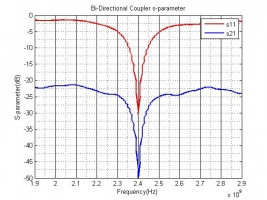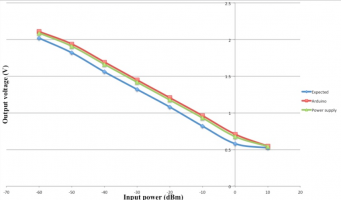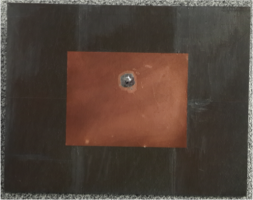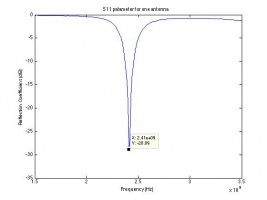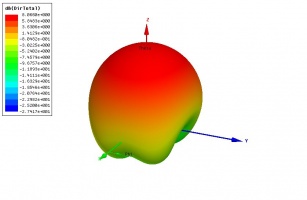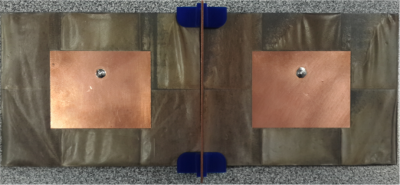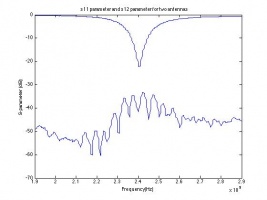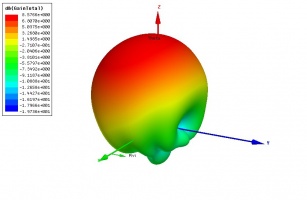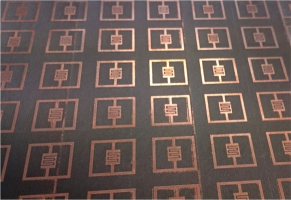Projects:2014S1-11 Wireless Rotation Detector for Sport Equipment
This project focuses on developing a wireless non-optical solution for measuring the rotation of objects. The solution to this problem is approached through the use on antenna and the polarisation effect that antenna are subject to.
Contents
Project information
Motivation and Background
- Rotation can be measured through optical means but this is subject to line of sight and may be blocked in some cases. Antennas do not suffer these same problems.
- The most important principle used is that of the polarisation effect. This states that when two antennas are aligned parallel in the same plane then the power transmitted between them is maximised. When the two antennas are in perpendicular planes then the power is zero. Using this fact we can use the frequency of the changing power to measure the speed of rotation.
Previous work
Previous work has been done in this area through a honours project in 2012. This resulted in a device where a transmitting antenna and circuitry required to produce the signal are placed on the rotating object. This then sends a signal back to a receiving device that would then calculate the speed of rotation using the polarisation effect. This year we aimed to remove all the circuitry on the rotating object and just leave and antenna that will reflect a transmitted signal. This then gives us less weight and no power required on the rotating object. This approach is made possible by the use of an absorber and bi-directional coupler.
Aim
For this year project, we aim to create an improved device, which measure the rotation speed without the battery and signal generation on the target object and smaller physical size and weight of the integrated device. We also aim to build a more compact hand-held device with handle and easy access to user interface.
Outline of proposed work
- Improve knowledge of antenna theory, antenna simulation software, signal generation, signal interference, calculation algorithm (fast Fourier transform), Arduino Board and Arduino development tool.
- Develop the system overview of the project and identify the key components needed.
- Compare the features of commercial devices with custom designs (e.g. size, price, weight, performance, working condition and low-profile configuration).
- Test the commercial devices and custom-designed devices under laboratory conditions. Then integrated all the devices together and measure the performance of the project under real-world condition.
High-Level Plan
- Phase 1 :
- Generating the ISM frequency by using the voltage control oscillator.
- Phase 2 :
- Using the transceiver to send the signal.
- The absorber is attached to the target object.
- Receiving the reflected signal from absorber.
- Phase 3 :
- Separating the received signal from the transmitted signal through using of bidirectional-coupler or crosstalk-reduced receiver.
- Phase 4 :
- Using the power of the separated received signal to calculate the rotation speed of the target object.
Component Specification
- Commercial Devices
- Voltage contolled Oscillator
- Bi-dirctional Coupler
- Power Detector
- Arduino Uno Board
- Custom-designed Devices
- Transceiver
- Transmitter and Receiver
- Absorber
Component test results
Each of the components were tested individually before being incorporated together
- VCO
The VCO was test with a power supply to see the tuning voltage needed before using the Arduino board to receive similar result. Using the Arduino board to supply a 3.2V tuning voltage the VCO produces at 2.4025 Ghz signal with 5.6 dBm power. This is the signal that is used in the device.
- Bi-Directionl Coupler
The Bi-Directional coupler was tested with a network analyser. port 1 of the network analyser was connected to the the input and port 2 was connected to the coupled in reverse port of the coupler. The output of the coupler was connected to the transceiver and the input coupled forward port is terminated with a 50 ohm resister.
- Power Detector
- Arduino Board
- Transceiver
- Dual Antenna
- Absorber
Team
Group members
- Mr Yizhang Chen
- Mr Todd Mark
- Mr Thomas Davis
Supervisors
- Dr Thomas Kaufmann
- Prof. Christophe Fumeaux
Resources
- Bench 10
- Standard PC
- Arduino UNO Board
- DC Power supply
- Signal Generator
- Arbitrary Function Generator
- Oscilloscope
- Network Analyser
- Anechoic Chamber
- Application software
- ANSYS HFSS
- DraftSight
- Processing 2
- Arduino IDE

